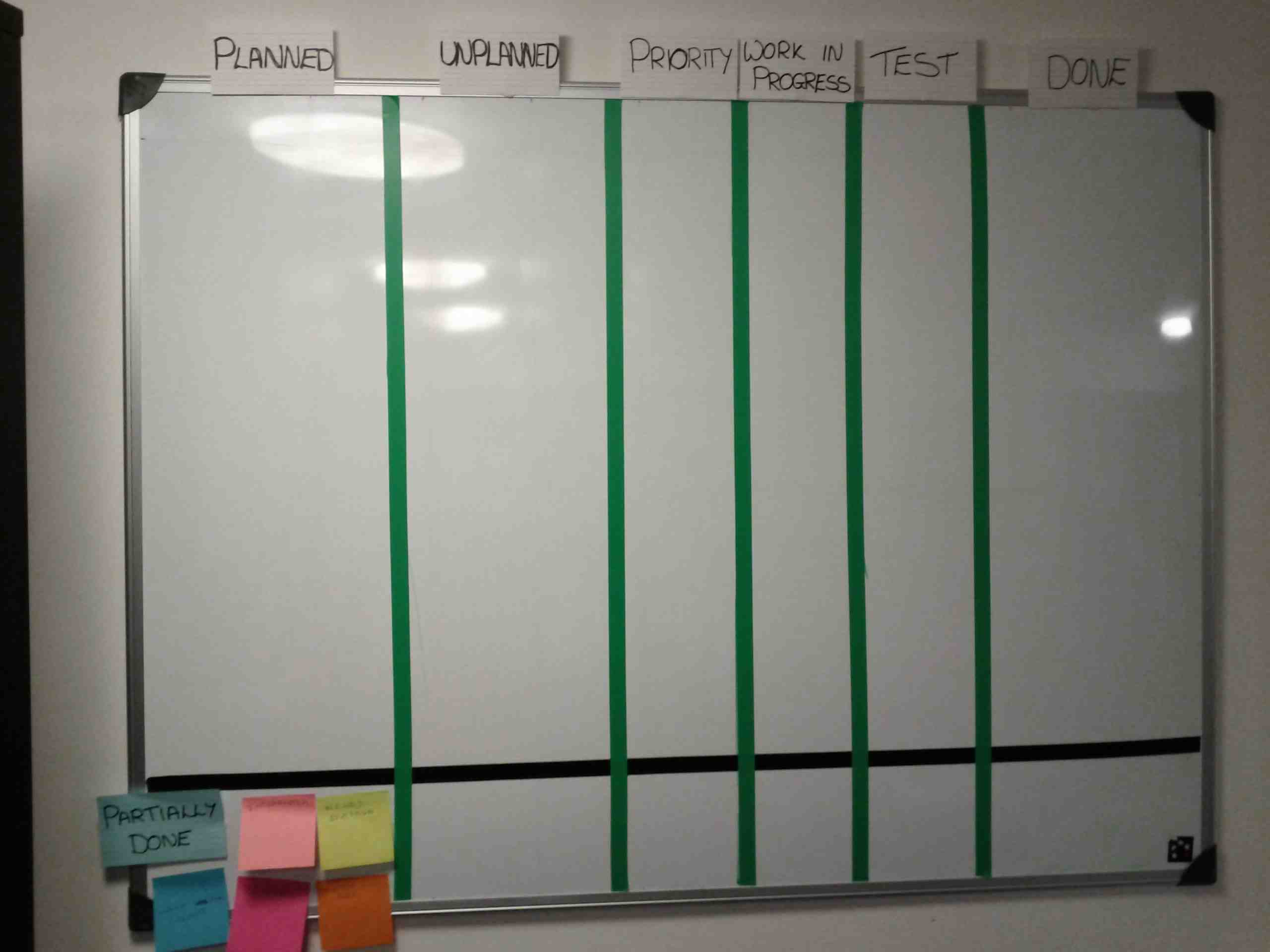
This might be the perfect board layout for the team for ever. More likely it can be improved over time - in the words of Kevlin Henney, it is a Stable Intermediary Form.
I think of Xanpan boards like the Pompido centre in Paris, they externalise the plumbing. In this case the workflow and work in progress. You can see the stuff that is normally hidden inside.
My rules are quite straight forward for Xanpan boards:
Stage 1:
- Model the current workflow on the board: avoid changing it too much to “how it should be” but you will probably need to modify the workflow a little in order to be able to model it.
- Make sure you talk through various scenarios for work to make sure you have a workflow that will, well, work. As I said in the original Xanpan blog post columns normally come in pairs: queue then work.
- Operate the board for at least one iteration (several weeks) and learn from it.
- Reflect and refine the board: in doing so you will modify the workflow, this should be an improvement.
- Operate the board some more an start gathering data, qualitative and quantitative about the flow of work.
Stage 2: (Assuming you want to improve the throughput)
- Think of the board as a pipeline: there are two ways to improve throughput, make the pipe bigger or make things move through the pipe faster.
- Look at the blocks: why are they blocking or impeding? What can you do about removing them, not just on this occasion but permanently
- Where are the queues building up? Can you rebalance the board, or rather how your people (and possibly other resources) are deployed to even this out
- Add people to the team gradually over time: adding people slows down the existing team, the bigger the team the smaller the proportional slow down, above all else: avoid foie gras recruitment. Again this is likely to be a long term activity.
- Look to level workflow: reduce the peaks and move work to the lows.
- Look to increase the value of the items moving through the pipeline - more and better business analysis and product management
No comments:
Post a Comment
Note: only a member of this blog may post a comment.